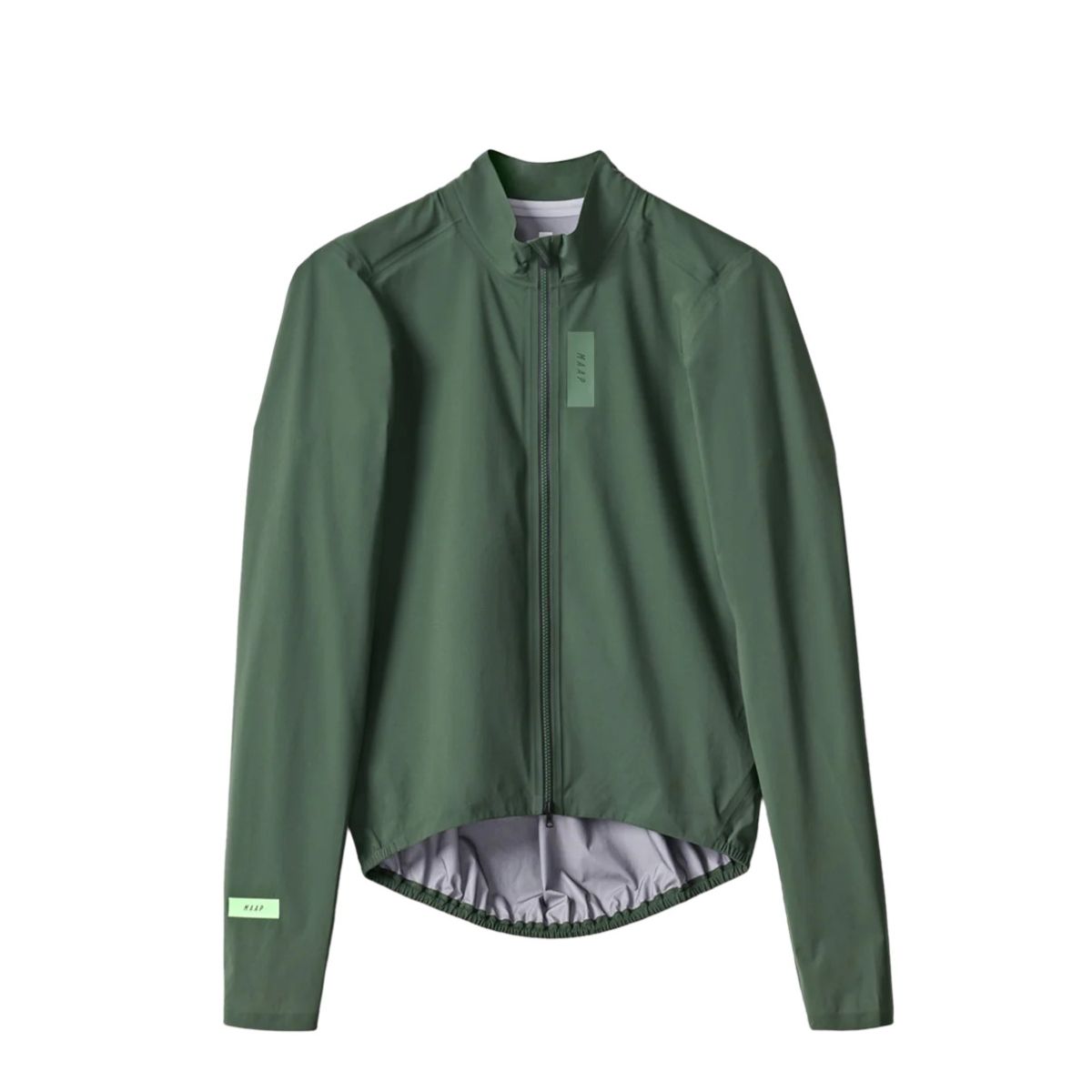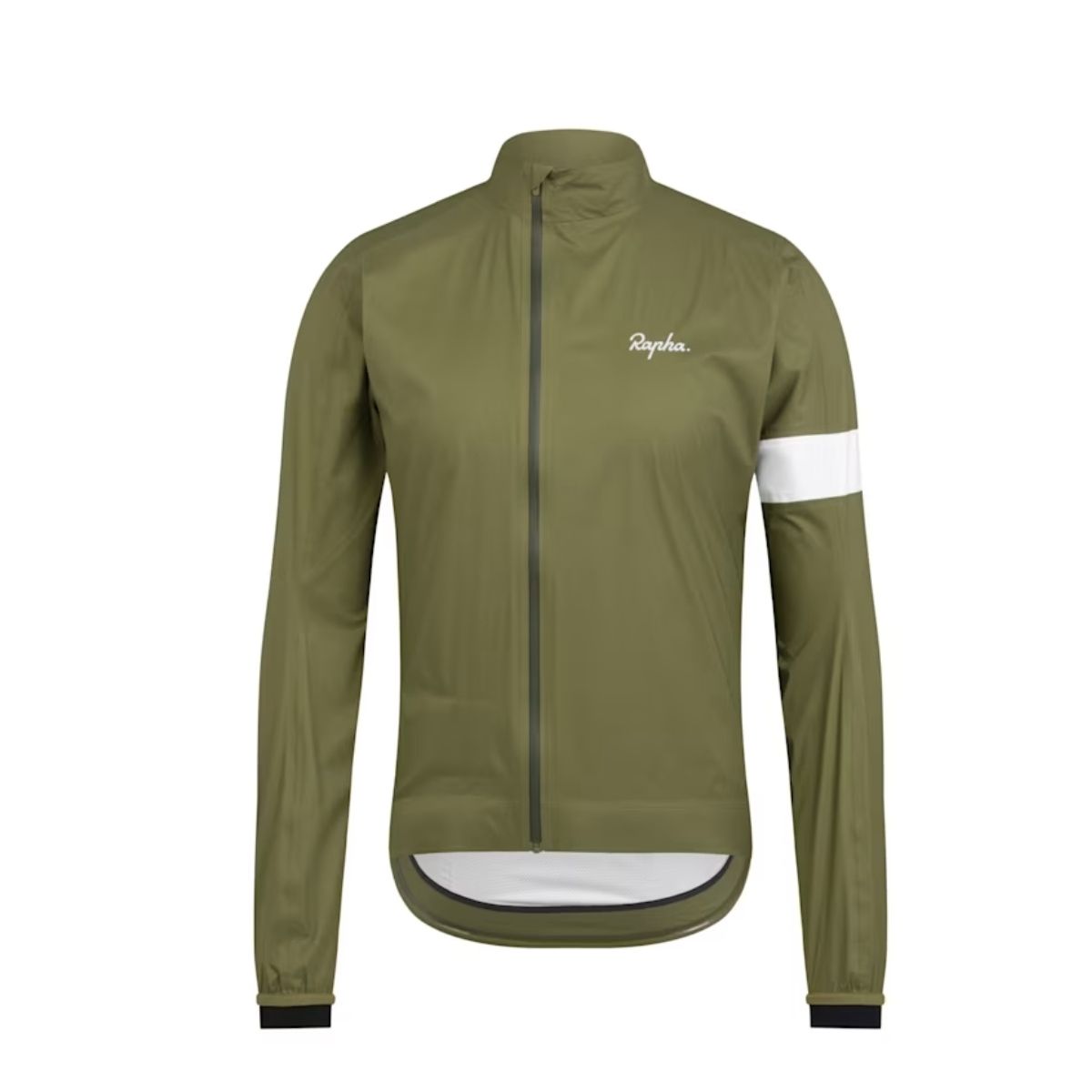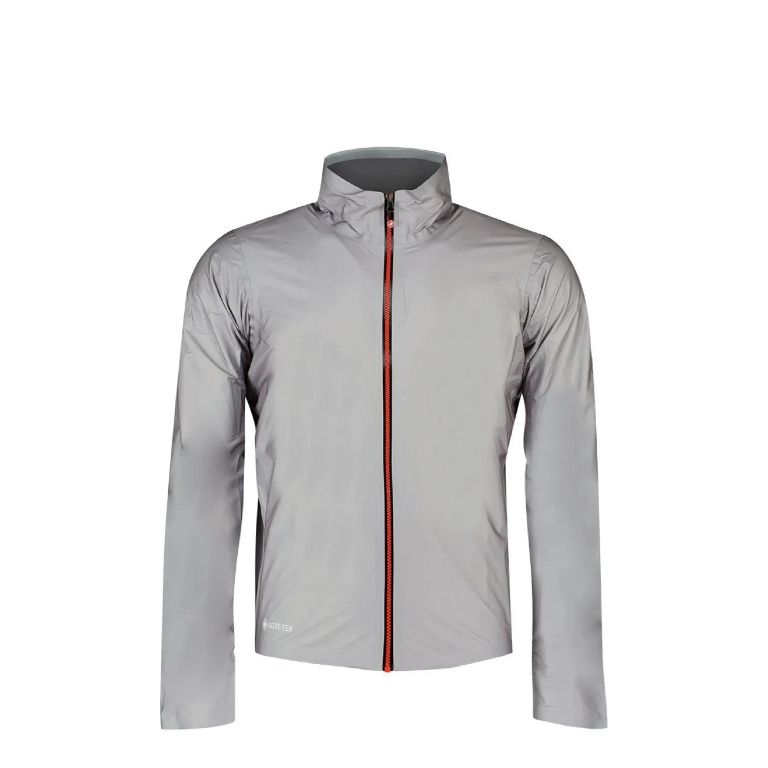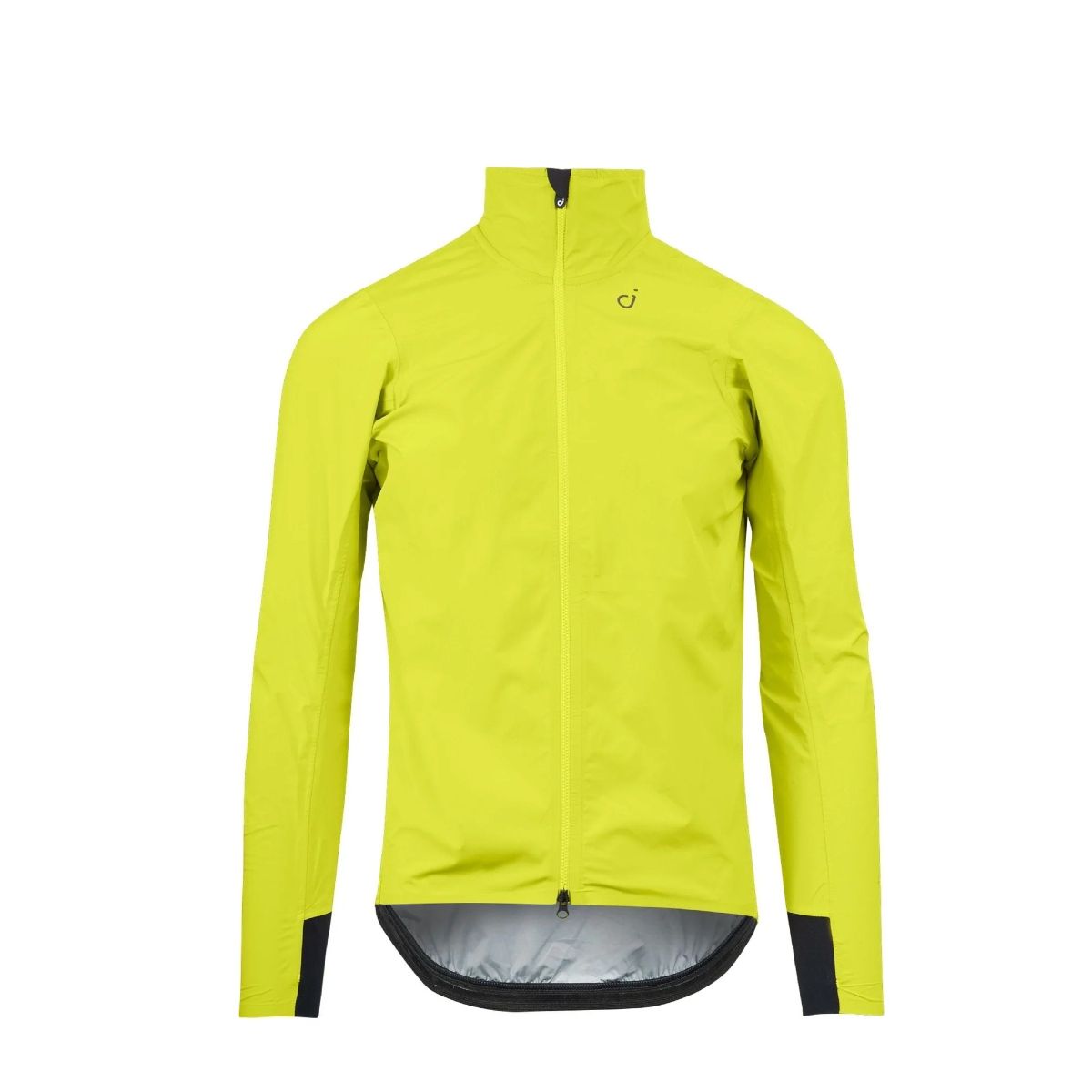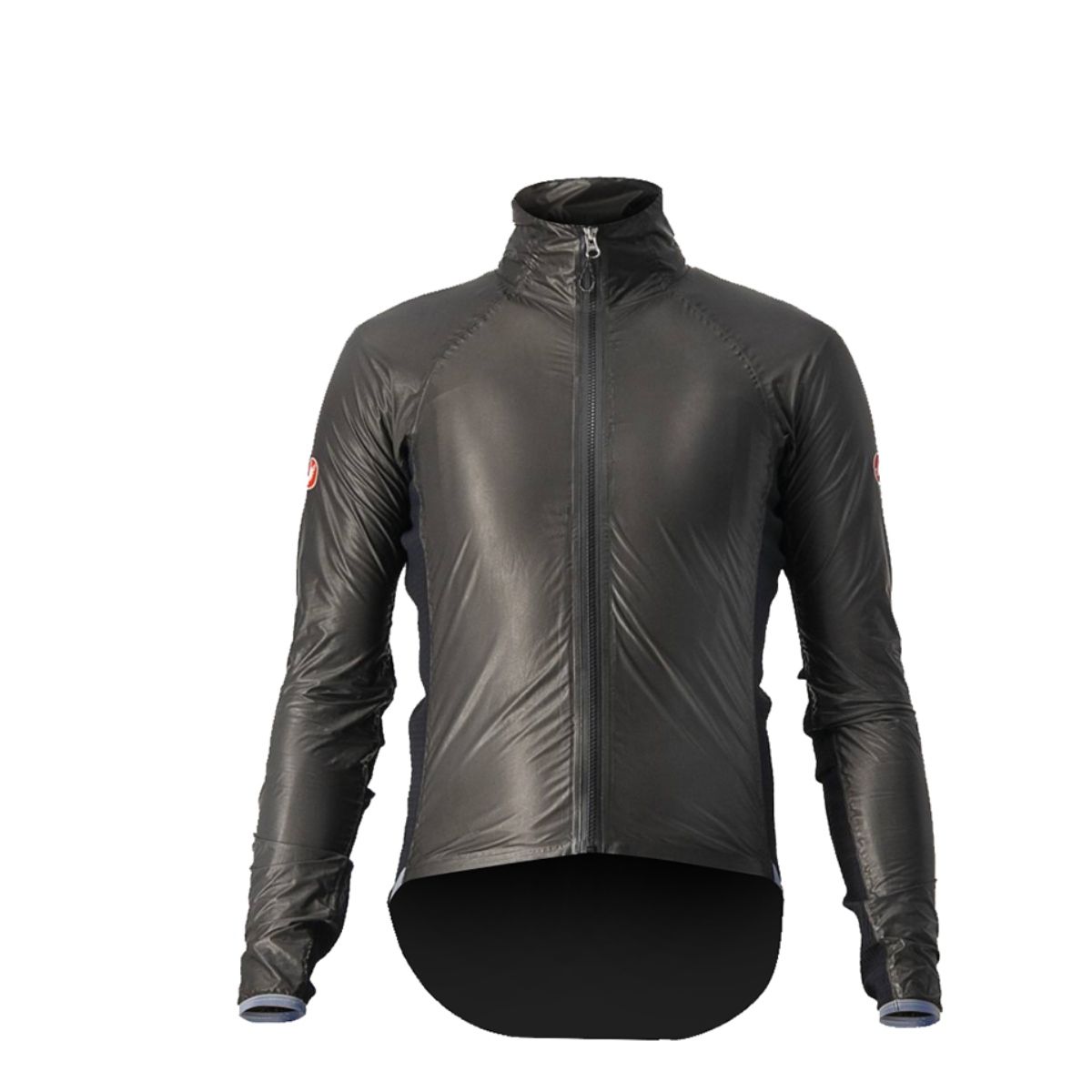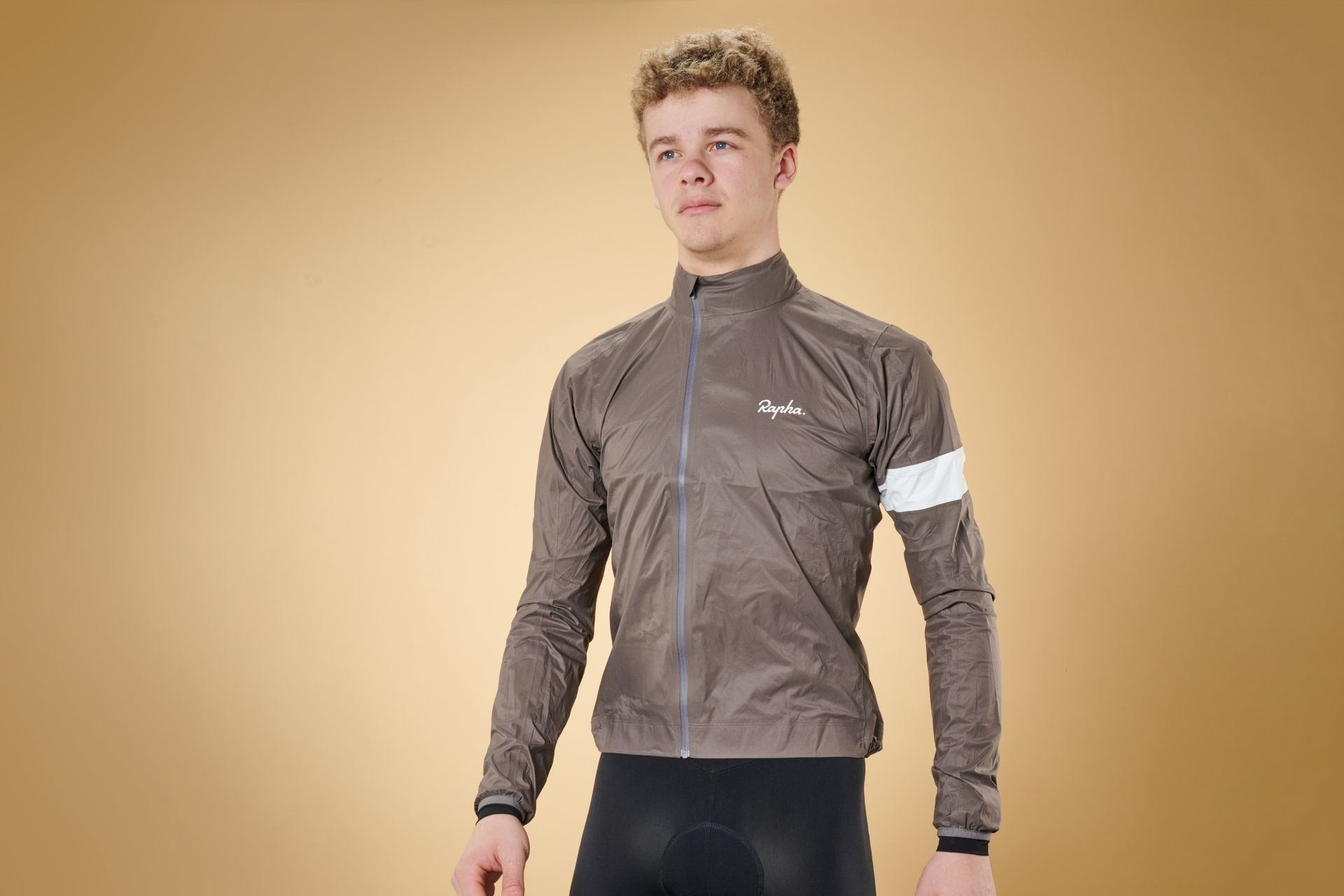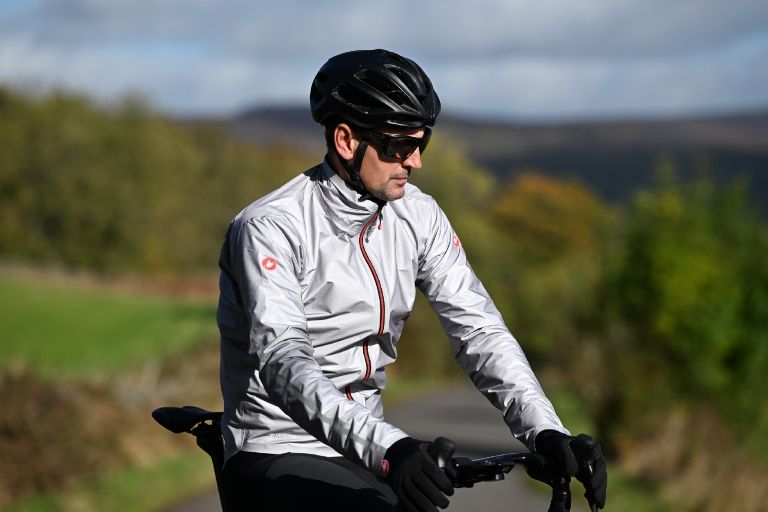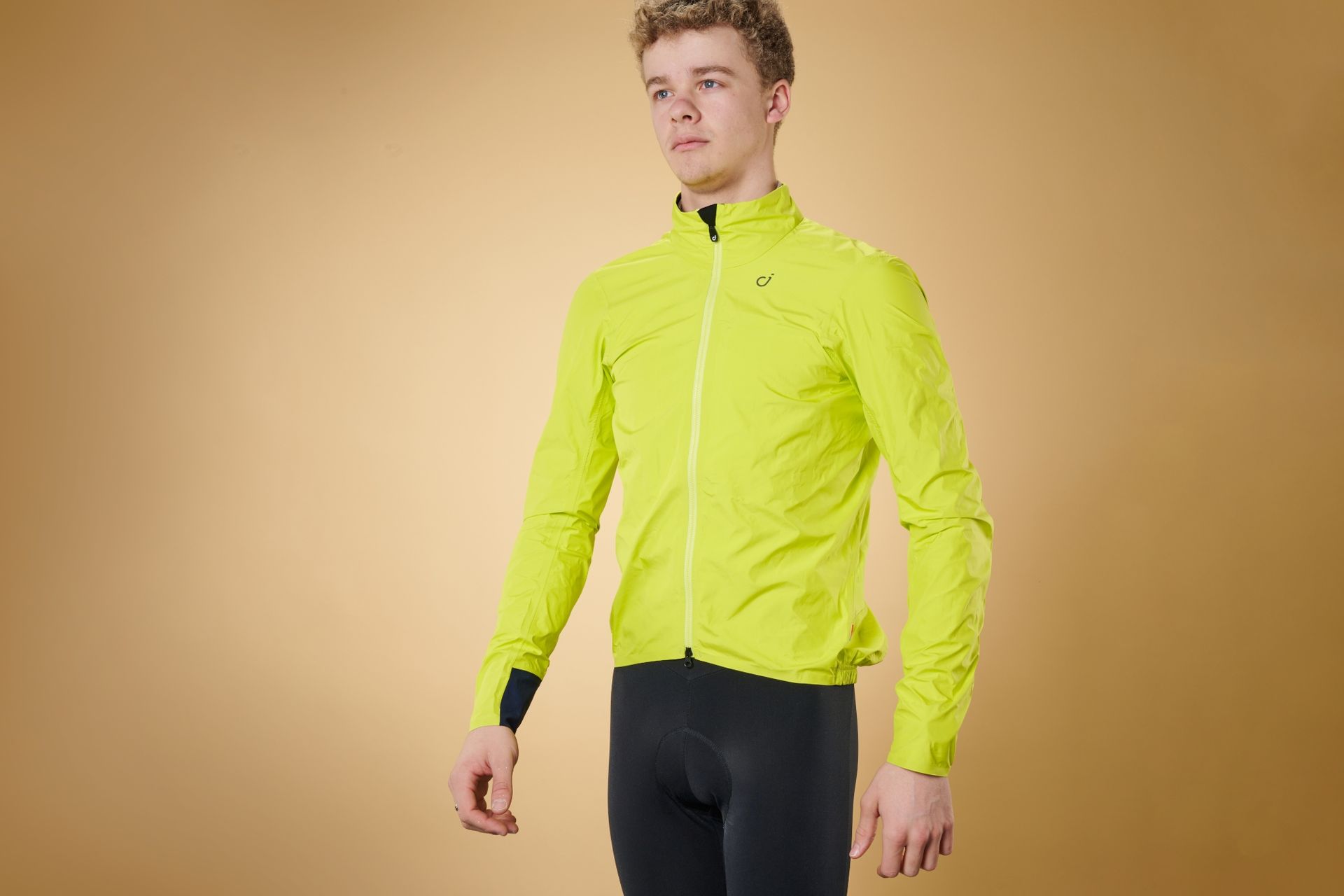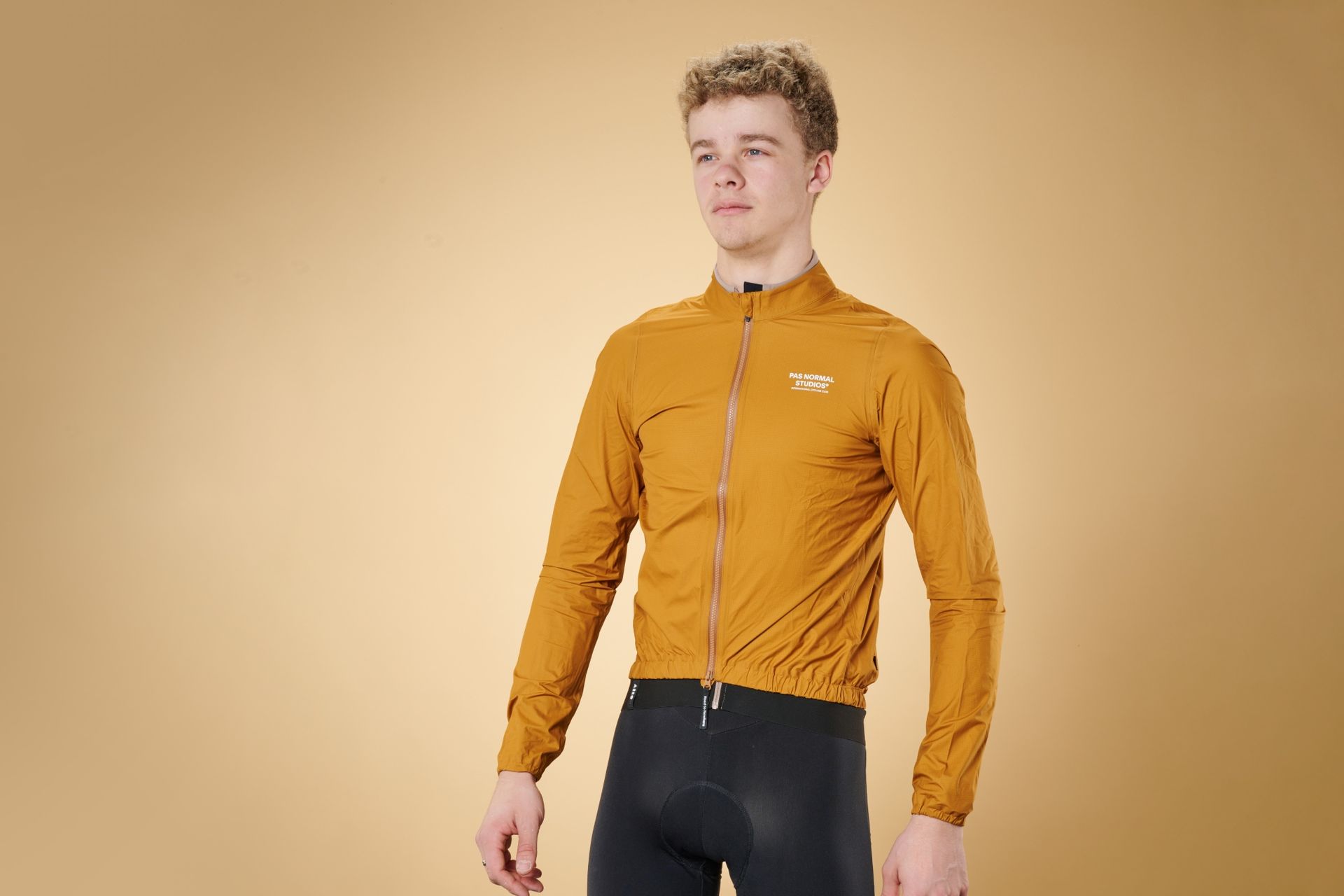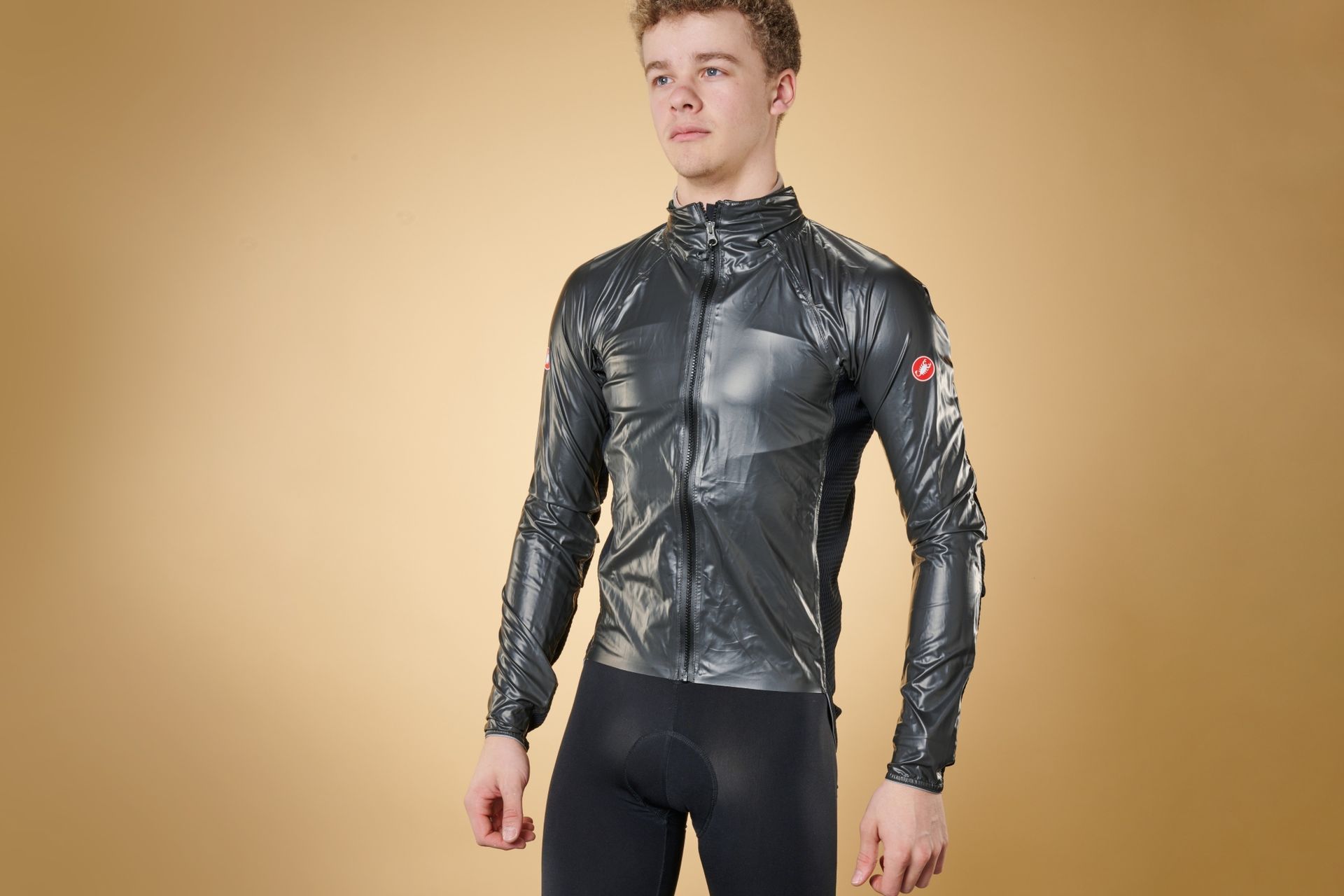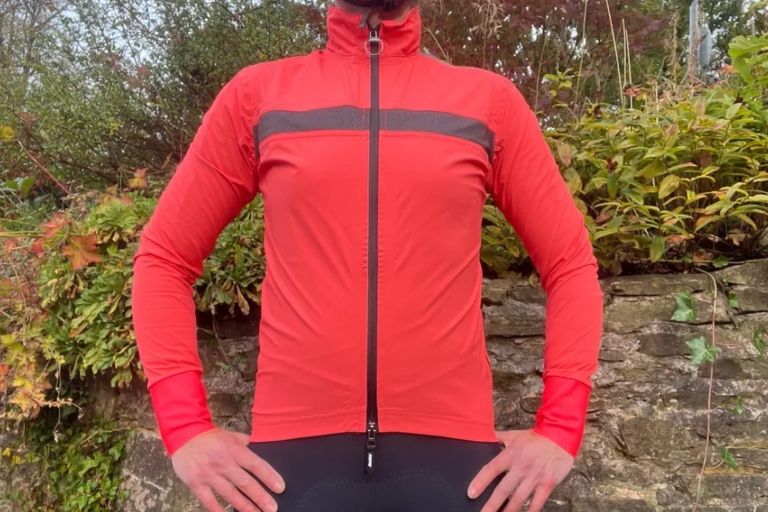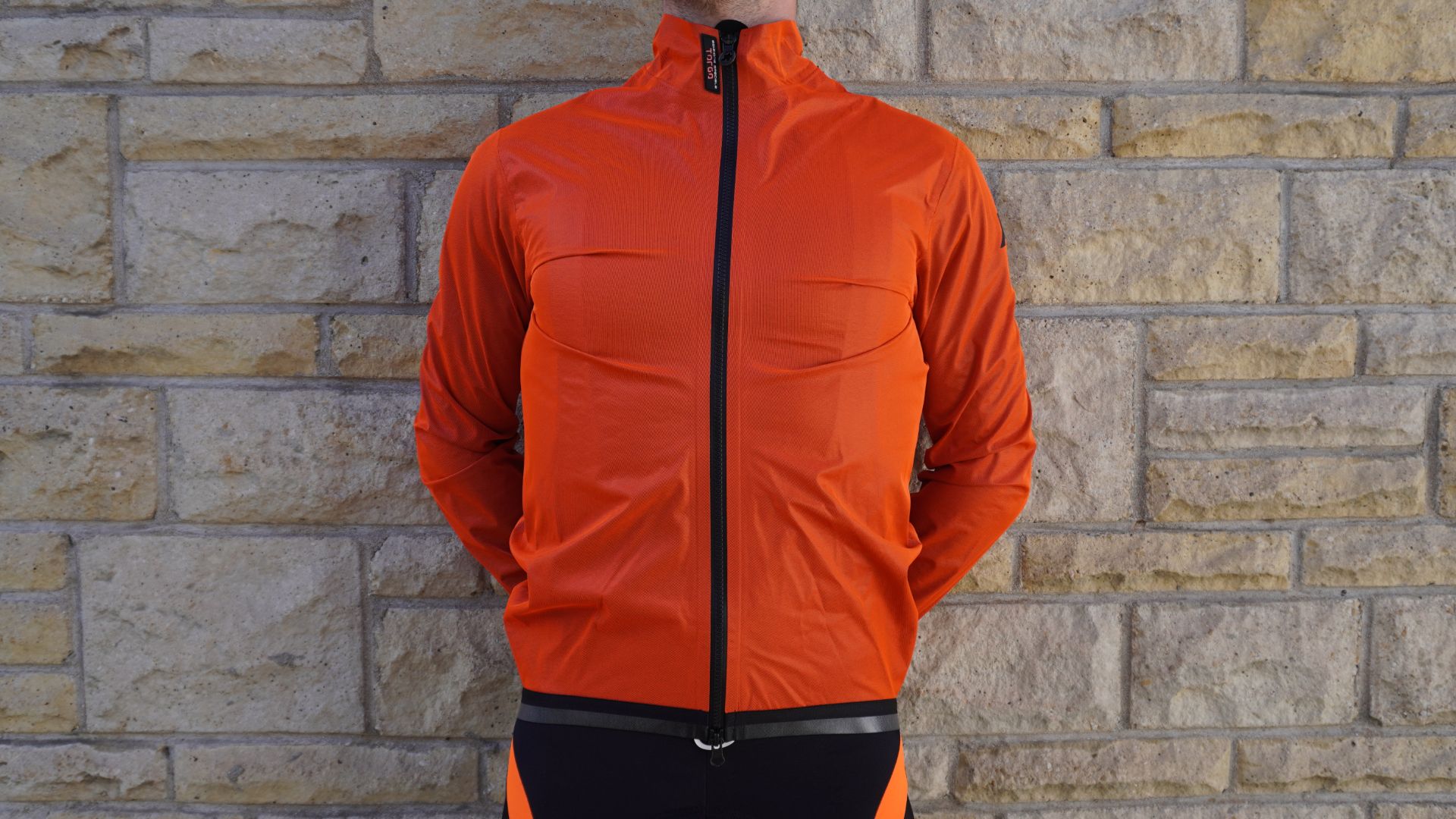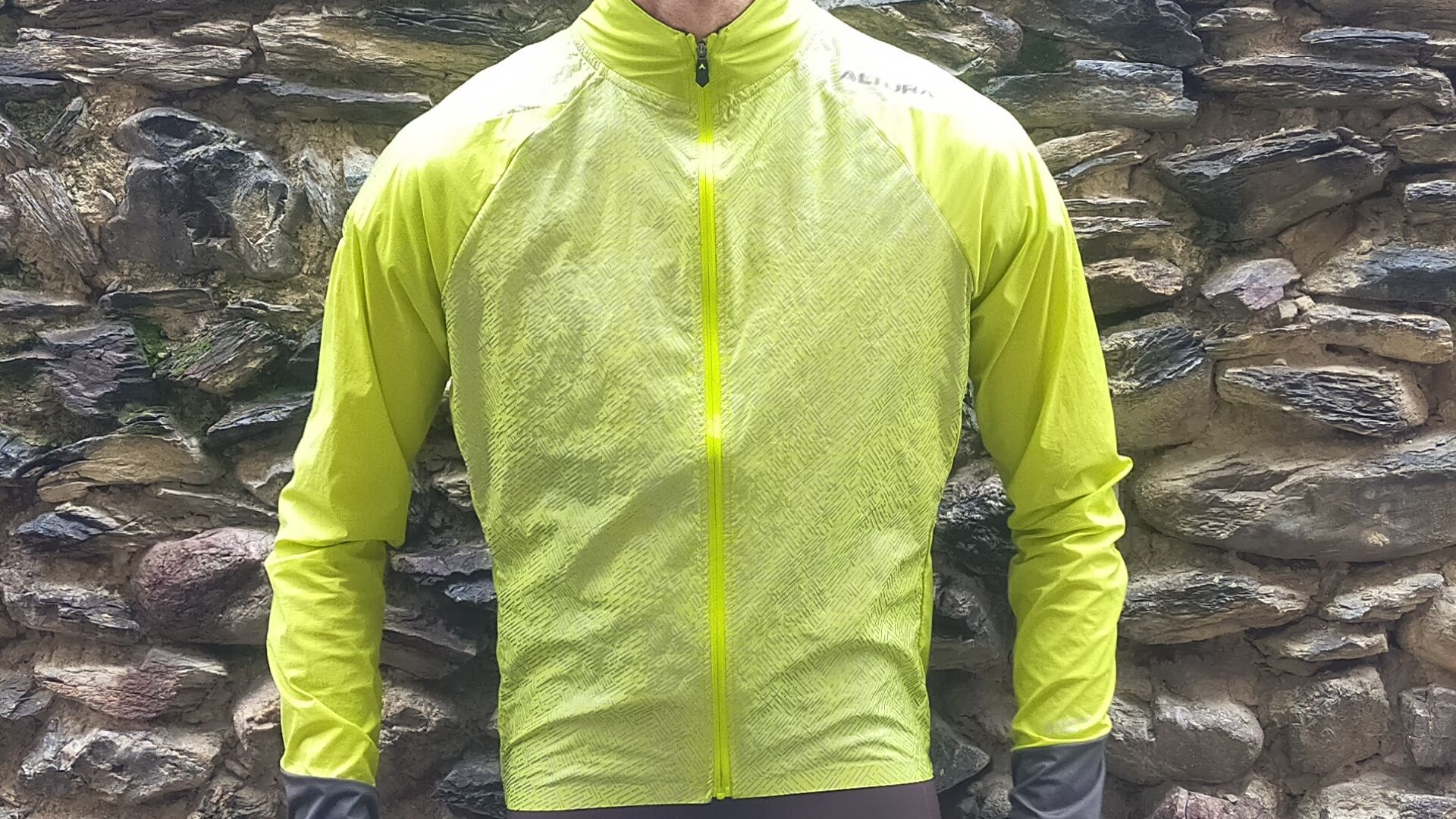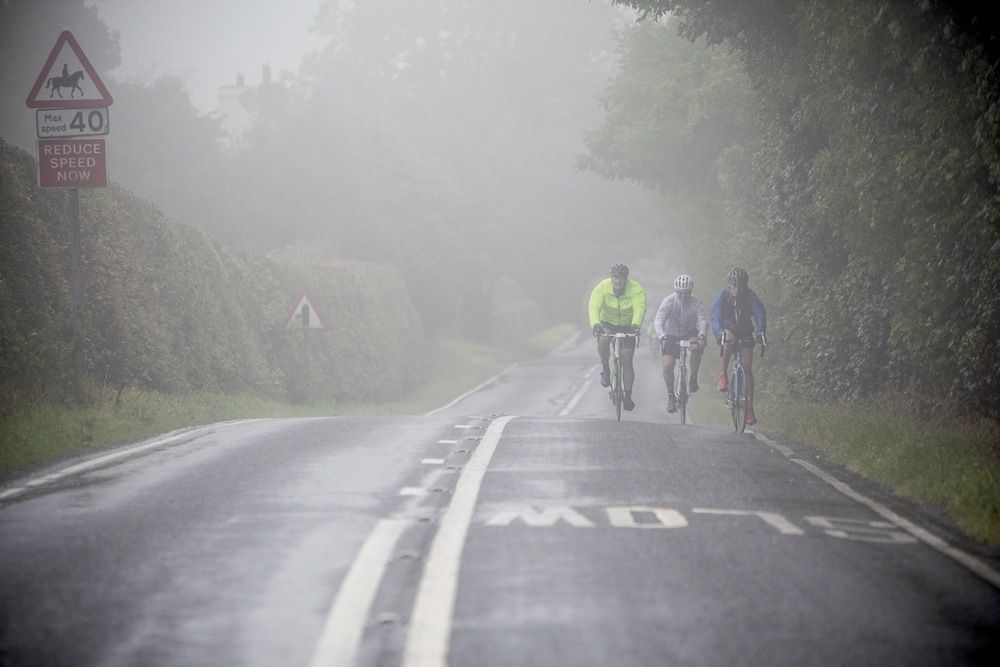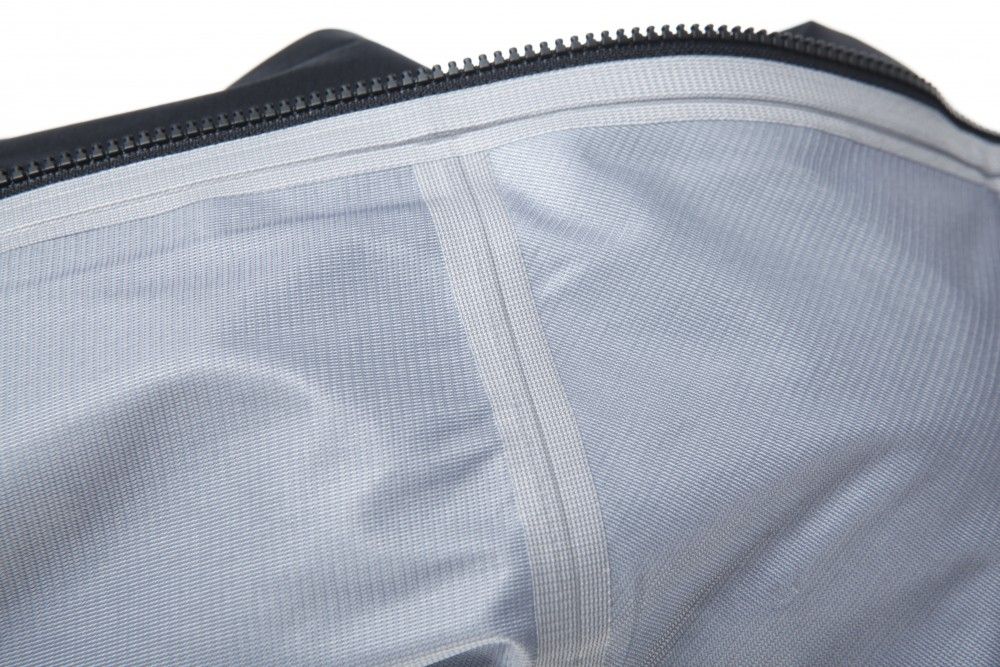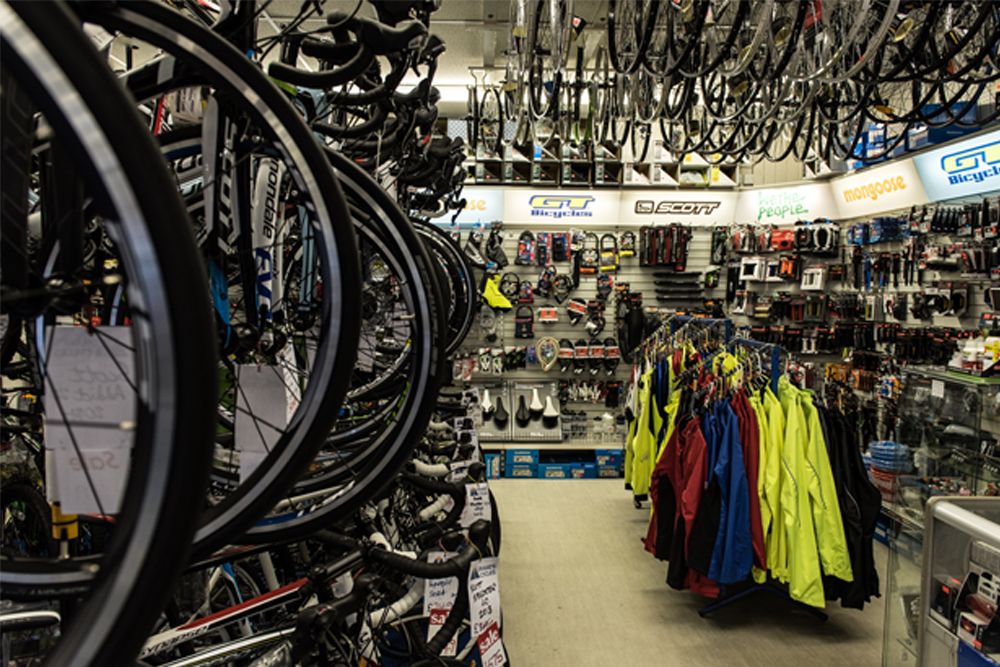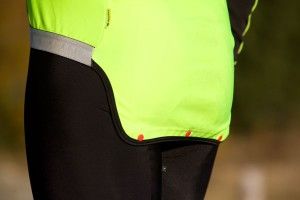Best waterproof cycling jackets 2024: tried and tested models that'll keep you dry
A good waterproof cycling jacket will make cycling in wet weather that little bit more bearable


Spend much time on a bike and you are very likely to experience rain, especially in the UK or Pacific Northwest of America. Getting wet and cold on a bike is no fun at all, especially if you are a long way from home, so investing in a decent waterproof jacket should be high on the priority list for most riders.
As cyclists, we ask quite a lot of our waterproof clothing; it must protect us from the rain, allow moisture vapour in the form of sweat to escape so we don’t get damp and it needs to pack up small enough for a jersey pocket when not in use.
Even with the drive to reduce environmentally harmful PFAS (polyfluoroalky substances), there are a bewildering number of options when it comes to jackets, with most claiming to be waterproof and breathable despite the huge disparity in prices. By and large, you do get what you pay for, so whilst the cheapest jackets will probably keep the rain out they will suffer in terms of breathability and packability. Of course, this isn’t always the case, and you need to decide which factor you prioritise for your use and budget. Furthermore, whilst the fabric is a crucial part of the garment’s performance, even the best material won’t make a good cycling jacket if the cut is wrong, so cycling-specific clothing is always better than more generic products.
If you are planning on building up a good winter cycling wardrobe to keep you riding in any weather, then also have a look at the best waterproof cycling trousers and the best cycling overshoes.
The Quick List
Best overall
Combines superior waterproofing with a comfortable race fit. Lightweight it comfortably stows in a jersey pocket.
Best value
Affordable but with no sign of corner cutting, it's light, packable and delivers great protection in the wet.
Best for breathability
Using Gore Active Technology, the Tempesta Lite is highly breathable and waterproof. It packs down well for a 3-ply garment but doesn't have the raciest cut.
Best for pocket access
Innovative cutouts on the rear of the jacket allow for easy access to your jersey pockets. Light and packable.
Most packable
Small enough to stow in a pocket, it blends a lovely race fit with superb waterproofing qualities.
Best for warmth
Heavier material makes for great protection against the wind. Race fit with three rear pockets.
The best waterproof jackets 2024: Our picks
Best overall
MAAP Atmos waterproof jacket
MAAP Atmos rain jacket
Our expert review:
Specifications
Reasons to buy
Reasons to avoid
The Maap Atmos Rain Jacket uses Pertex® Shield fabric (as does the Pas Normal jacket) - and it performs exceptionally well. The Atmos though, is stretchier than the Mechanism Rain Jacket and allows for much more freedom of movement on the bike.
Maap has kept the design relatively simple. Cuffs are handled with an elastic band that partially extends around each wrist - this keeps the fabric from bunching up too much, which I found to be great for comfort. The waist too features an elastic lining which keeps it tight to your body. It doesn’t offer the same level of adjustability as the jackets that feature an adjustable drawstring, but it never rode up during riding - so no worries there!
Sure enough, the brilliant blend of a comfortable, soft fabric, coupled with a great fit and quality grippers made for an awesome experience out on the bike. I found that the Atmos jacket struck the best blend of having an airy feel, whilst getting the basics right - waterproofing and comfort.
In our indoor testing, the Maap once again stole the show. It placed equal first in the seam testing, with zero water ingression over the 10 minute period. In the shower, the YKK two-way zipper was bulletproof too, resisting high-pressure water pretty much as well as Rapha’s offering.
Weight and packability are right on the money too - the jacket weighs just 125 grams and packs down to around half the size of a standard jersey pocket when wrapped tight.
It certainly isn’t cheap, and it doesn’t necessarily have the bells and whistles that some of the other jackets do when it comes to pockets. But the overall experience of the Maap Atmos jacket is outstanding.
Best value
Rapha Core Rain jacket II
Rapha Core Rain Jacket II
Our expert review:
Specifications
Reasons to buy
Reasons to avoid
Rapha’s Core Rain Jacket II is one of the cheaper jackets here and its performance at this price point makes it incredibly good value for money. It is constructed using a 2.5-layer nylon fabric which means it’s comprised of nylon face fabric with a chemical hydrophobic spray (DWR), a laminate layer, and a printed layer. Rapha has also included a YKK AquaGuard® water-resistant zip and an elastic cord around the bottom of the jacket to adjust how tight it fits around your waist. It's certainly a performance cut - fitting closely (but not too tight) around my shoulders and torso, with good length too.
On the bike, I found the Core Rain Jacket II performed brilliantly. In the wettest weather, thanks to the small ventilation holes, there was a tiny amount of water seeping through under the arms, but nothing more. The 2.5-layer construction, though cheaper to produce than three-layer garments doesn’t breathe quite as well as more premium fabrics, though in colder weather it is less of an issue.
The jacket really impressed me during stress testing though. Of all the jackets, it was level best on the seam test, with no water seepage during the 10-minute test. In our shower testing the zip did not leak, even under high water pressure. All this, in a 126 gram jacket that was just as packable as any other on test.
I love the design of the Core Rain Jacket II. It’s simple, classy, and really does all you need a rain cape to do. Rapha has done well to include the rear elastic, brilliant cuffs, rear gripper, and great fit all at a more humble price point.
Best for breathability
Castelli Tempesta Lite
Specifications
Reasons to buy
Reasons to avoid
The Tempesta Lite uses Gore Active Technology material, which harks back to their pre-Shakedry Active Shell fabric. It is very light for a 3-ply jacket, and as such is hard to beat in terms of outright protection compared with some of the thinner, lighter fabrics in this guide.
We found the breathability to be excellent, and the fabric copes well with sweaty conditions, although the cut is likely to mean that it is more of an endurance rider's garment rather than a racer's jacket. In part, this is because the cut is a little looser as the fabric doesn't have a lot of stretch in it. It is also less packable than some options, and although it will fit in a jersey pocket it takes up a fair bit of room.
The non-elasticated open-sleeve design is a little odd, and our tester wasn't too keen on the slit at the back for accessing jersey pockets - he felt that a double zip would have been a neater solution.
At its rather high price, it is likely to appeal only to those who ride regularly in the rain and are prepared to pay for its performance attributes.
Full review of the Castelli Tempesta Lite
Best for pocket access
Velocio Ultralight rain jacket
Velocio Ultralight rain jacket
Our expert review:
Specifications
Reasons to buy
Reasons to avoid
Another jacket to impress was the Velocio Ultralight Rain Jacket. The Ultralight features eVent DV Storm fabric, which performed fairly well, and has an interesting design. Velocio has opted for overlapped cutouts on the rear of the jacket, which allow for easy pocket access. Up front, the jacket features a dual zip, allowing you to ventilate both top and bottom.
The aforementioned pocket access holes were a real blessing out on the road. Not having to faff around rolling up the rear of the jersey is a lovely comfort to have, particularly with cold hands. I did notice that I had to make sure the overlap was sat back in place though, as allowing it to flap up did cause some water ingress.
In the stress testing, the Velocio jacket placed fourth in the seam test, with a small amount of water seeping through. The zip test, however, was a different story. I didn’t notice it too much on the bike, but the zip did give way to water at higher pressures - the reality here, is that you might see some water ingression on much longer rides - something to bear in mind.
As for packability, the Ultralight weighs 176gram (S), and packs down pretty small to around a Coke can in size, though not as small as the likes of the Rapha Core Rain Jacket II. The Velocio provided a great fit too, and certainly aimed more at aggressive riding positions. The cape has a long tail and is narrow at the front when standing, meaning it stays a close fit when you are in a riding position.
Velocio has done a good job with the Ultralight Rain Jacket. The design makes sense for real-world riding, and the fabric is right up there with waterproofing and breathability - it doesn’t come cheap though.
Most packable
Pas Normal Studios Mechanism rain jacket
Pas Normal Studios Mechanism Pertex Rain Jacket
Our expert review:
Specifications
Reasons to buy
Reasons to avoid
Pas Normal Studios has been making quite the storm in recent years in the premium clothing market and for good reason. The Mechanism jacket uses Pertex® Shield fabric, with a three-layer construction. As far as the design goes, PNS has kept the Mechanism Jacket fairly straightforward, with no pockets, and simple elastic cuffs. It also features a two-way YKK Waterproof Zip.
A simple yet effective design seriously impressed out on the road. I will say, from a size perspective, the Pas Normal Studios does come up on the short side, more noticeable in the torso than the arms, however, this is something I am fairly used to seeing - but if in doubt, size up.
Waterproofing was right on the money. Even for extended rain periods, there was minimal to no rain seeping through the jacket. The cuffs too were more comfortable than I expected. A fabric neck liner allows for a close fit while remaining comfortable, and the elastic sleeves are very noninvasive. The jacket is breathable too, not overheating even when riding slightly overdressed.
The seams are impressive, and the Mechanism Jacket takes equal first place in our testing. The zip fell slightly short of that seen on the Rapha Core Rain Jacket II, but still showed minimal water ingress even at higher pressure.
When it comes to value, Pas Normal Studios has done fairly well. While it's certainly not cheap, given the garment weighs just 105 grams (S) and packs down the smallest, the lack of features is really overruled by the impressive quality.
Best for warmth
Castelli Slicker rain jacket
Castelli Slicker Pro Rain Jacket
Our expert review:
Specifications
Reasons to buy
Reasons to avoid
When Gore announced the retirement of its Shakedry fabric, Castelli set out to create its own new waterproof membrane to replace it. They worked with a manufacturer to come up with a 2 layer Microshell fabric. Due to the fabric not having loads of stretch, different materials can be found on the side panels and shoulders to ensure a non-restrictive jacket. It’s also the only jacket on test to feature three jersey-style pockets at the rear, which is useful, although they are not zipped, so are no place to store a phone or other valuables.
Once again, I can’t fault the fit, in fact, Castelli does it best. The Slicker Pro has a nice high neckline, tight yet comfortable cuffs, and the longest tail on the test. This design certainly helped it out on the road where it provided great coverage. The jacket was also one of the warmest on test - it still breathed well, but the slightly thicker build was noticeable when it came to wind chill factor. It’s not quite as packable though, and weighs a touch more than most at 209 grams.
However, indoors, it was a different story. The Castelli jacket came last in our seam test, with a large amount of water ingress noticeable in the 10-minute test period. The zip too allowed water through - and this did leave me confused.
Out riding, I didn’t notice excess water on the inside of the garment, but in our specific testing, I did. The conclusion I have drawn here is that on longer rides, I would expect you might see more water ingress with this jacket.
Overall it’s tough to recommend the Castelli Slicker Pro thanks to the elephant in the room - it’s price. It is by far and away the most expensive jacket on test at £450, and in our testing, it just didn’t perform well enough to justify its price tag.
Best for versatility
Santini Guard Neos Jacket is versatile and is comfy next to the skin as well as when layered
Specifications
Reasons to buy
Reasons to avoid
Santini's Guard Neos uses Polartec's non-PFAS Neoshell fabric with a hydrostatic head of 20,000mm, making it ideal for staying dry in the very worst weather. Furthermore, the version we had on test included a stowaway hood in the collar for added shelter, although a non-hooded model is also available.
We liked the jacket's versatility. Our tester wore it in temperatures between 7° and 15°C, and the softshell-style material was comfortable even if worn next to the skin. We also loved the fabric's air exchange ability—the way it moves warm, moist air out so you don't get damp inside the jacket.
Storage-wise, there is only a single, zipped rear pocket so it isn't ideal for carrying winter paraphernalia unless you use a jersey underneath it or carry a saddlebag. The price could also be an issue for some - £295/$305 (£320/$270 for the male version), although if it is versatile enough to be worn frequently then this does improve its value-for-money rating, and the hoodless version is a fair chunk cheaper.
Best combination of packability and robustness
The Equipe RS rain jacket uses a softshell fabric for a blend of protection and breathability
Specifications
Reasons to buy
Reasons to avoid
Made from a softshell, Schloss Tex fabric, designed specifically for the Equip RS, the jacket is waterproof as you can get, but also breathable. The hydrophobic membrane is DWR coated, seams are taped and its race-cut design helps keep most of the water out, although the stretch wrist band did let it down when not orientated directly out of rain spray when we tested it.
It's not quite as compact as some of the others on this list, but this Swiss jacket will easily stuff into a pocket and the high viz colour options get the thumbs up from us as one of our favourite waterproof jackets.
Read more: Assos Equipe RS Rain Jacket Targa full review
Best on a budget
The Icon Rocket jacket delivers lightweight protection without having to break the bank
Specifications
Reasons to buy
Reasons to avoid
If you’re looking for an affordable lightweight, packable jacket that’ll keep you dry in most types of wet weather conditions, the Altura Icon Rocket should be seriously considered.
Most definitely used in the shoulder season and when necessary in summer temperatures, the Altura Icon repels moderate rain and road spray. As for the fit, we found it to be tight without ever being too obstructive.
Aside from a small, open pocket on the right of the jacket that can store food, we found that the main disappointment is the lack of access to the jersey’s back pockets. But apart from this oversight, this is an essential piece of kit when the rain threatens.
Read more: Altura Icon Rocket Men’s packable jacket review
How to choose a waterproof cycling jacket
What are the key elements to a waterproof cycling jacket?
Key elements to look for in a waterproof jacket are waterproofing, breathability, fit and packability. The best waterproof cycling jacket for you will perfectly match your priorities for your style of bike riding. We’ve got in-depth details of all these features below – but as a quick summary:
Waterproofing: There’s a big difference between waterproof and water-resistant. Waterproof will normally come with a claimed waterproof rating of at least 10,000mm, be multilayered fabric with a perforated membrane, have taped seams and storm-proof zips. Water-resistant will usually have a Durable Water Resistant (DWR) coating and be lightweight, making it more packable.
Breathability: It’s a tricky balance between staying dry from rain and staying dry from sweat. Breathability can also be rated and claimed ratings of above 10,000g will help prevent you from boiling on the inside. Generally speaking, the more waterproof a fabric is, the less breathable it becomes, although there are some expensive exceptions to the rule. Jacket design often takes account of breathability with the inclusion of more breathable fabrics under the arms, or additional ventilation.
Fit: It’s horses for courses, or in this case: jackets for jockeys. Fast riding or racing will require a tight-fitting rain cape, which minimises fabric flap to maintain your aero performance, while slower all-day affairs may be more comfortable with a looser fit for layering up underneath. Other fit details, such as a long tail to keep your backside dry or thumb loops will appeal to some, but not others.
Packability: If conditions are changeable, then it’s likely you’ll want to be able to stow the jacket in a rear pocket. Waterproof jackets tend to be heavier and bulkier, and don’t often pack down small enough for a rear pocket, while water-resistant options can usually be scrunched into a ball the size of a fist, but the technology has come a long way since the original Gore-Tex days. Take a look at our guide to the best packable rain jackets if that's better suited to your needs.
With a good jacket, riding in the rain can be fun
How do I keep my jacket waterproof?
Even the best waterproof cycling jackets will tend to become less effective over time, with reduced waterproofing and/or breathability. That's due to a combination of the build-up of dirt on the outer surface and oil residues from sweat on the inside, as well as the loss of the outer DWR layer.
It's important to wash your waterproof jacket correctly to retain or restore breathability; take a look at our pieces on how to wash a waterproof jacket and the best products to use to learn how.
What do cyclists wear in the rain?
Clearly the most important thing you want to know about any waterproof cycling jacket is how waterproof it is. There are plenty of jackets out there that claim to be "water-resistant" (usually meaning that they have a Durable Water Resistant (DWR) coating applied to the fabric), but these will only keep you dry through showers and relatively light rain. If you want a proper waterproof cycling jacket for real wet weather riding, then you're going to want something with a little more protection.
The good news is you can get some idea of how waterproof a jacket is by doing a bit of research into any prospective purchase, with an increasing number of manufacturers stating the waterproof rating of their waterproof cycling jackets.
"But what's a waterproof rating!?" we hear you cry. Well, it's basically a number, and the higher the better. The number is calculated on the basis that if you put a 1cm x 1cm square tube over the fabric, how high could you fill the tube with water before it starts to leak through?
For the best waterproof cycling jacket, you're going to want something with a waterproof rating north of 10,000mm, although there are a number of jackets on the market that claim to offer more than this. However, "claim" is the keyword in this sentence, with no central body set up to test these figures, and manufacturers generally doing the testing of their own products.
It's also not all about the fabric when it comes to making a waterproof cycling jacket waterproof, with other features playing an important role. Most crucial of all is the seams. You can make a waterproof jacket out of the most waterproof material in the world, but if you then stitch a load of tiny holes in it, it's not going to do its job very well.
The solution to this is taping the seams, a process which covers the seams with a waterproof material, helping to keep the water out. All of the best waterproof cycling jackets will have this feature, although some will only have taped seams in crucial areas such as the shoulders and back, rather than across the whole jacket.
The other area where water is likely to get in is through the zip. This is particularly the case if you're riding in the wet in a group, where water is constantly being sprayed up onto your chest by the back wheel of the rider in front. Unsurprisingly the solution is a waterproof zip, which has tightly meshing teeth. It may have a storm flap either on the outside or on the inside too.
Take a look at our 11 tips for riding in the rain and our advice on how to dress for wet weather cycling to improve your wet-weather riding experience.
Taped seams will help with waterproofing
How is breathability measured?
For all that, probably the major factor that distinguishes a good waterproof cycling jacket from a bad one (or at least a great one from a good one) is breathability. If you're working hard (as we hope you are!) then you're going to be building up quite a lot of heat inside the jacket, so a good degree of breathability will allow sweat to escape.
As with waterproofing, it's possible to put a number to breathability, and again it's a case of the higher the better. In this case, the number refers to the weight (in grams) of water vapour that can pass through a 1m x 1m area of fabric over a 24 hour period. So if you have a jacket with a 20,000 breathability rating, 20,000g of water vapour can escape through the fabric in 24 hours.
Again, for the best waterproof cycling jacket, you're going to want that number to be more than 10,000 (g), but as with the waterproof rating, you should always be a sceptic, with manufacturers carrying out all the testing rather than an independent body, and the testing for the fabric only.
What fit should I get?
As with any piece of cycling clothing, making sure your waterproof cycling jacket fits properly is a crucial part of the equation. However, it's not a case of one size fits all, with different cuts being better suited to different types of riding and riders.
If you're using a waterproof jacket for fast rides, such as heading out for the local chain gang regardless of the weather, then you're going to want a relatively slim-fitting jacket which won't flap too much in the wind or descending, holding you back with its poor aerodynamic performance. However, you don't want it to be too tight, just in case you want to add extra layers underneath in really cold weather.
For everyone else, a slightly looser fit might be more suitable, giving the possibility for bulkier layers underneath and possibly greater comfort too, especially if you're looking for the best commuter cycling jacket and need to fit non-bike wear underneath. If you're riding in cold conditions, then check out our guide to the best winter cycling jackets, which often incorporate some water resistance as well as insulation.
That said, watch for a loose-fitting collar and cuffs that could also undermine an otherwise very waterproof cycling jacket, acting like a bucket for rain beading off your helmet or sleeves.
Does a waterproof jacket need to be packable?
If you're riding in changeable conditions, then packability is an important thing to look for in a new waterproof cycling jacket. If the sun comes out after it's chucked it down for the first two hours of your ride, then you're going to want something that will stuff down small enough to fit in a rear pocket. Don't forget you'll also be packing spares and ride snacks - so make sure you have space for it if you are starting out your ride with it on.
However, in general, waterproof cycling jackets that offer good waterproof protection are fairly bulky, so the majority will not pack down that small. Although new technology is making smaller jackets ever more waterproof it should come as no surprise that if you want a jacket that will both keep you dry in heavy, persistent rain and will pack down small enough to fit into a jersey pocket, you'll pay dearly for it.
Other fit details such as thumb loops are probably the most common extra feature found on many waterproof cycling jackets. These are designed to stop the sleeves from riding up, creating a gap between the cuffs of the jacket and your gloves, but are a love or hate feature, as some riders find this interferes with radial grip.
To keep your derriere dry from wheel spray it's also worth looking for a waterproof cycling jacket with a drop tail (or bumflap). However this isn't a case of manufacturers just adding an extra bit of material at the bottom of their jacket, and it'll need to have some silicone grippers or other devices to prevent it from riding up. It's also worth considering fitting mudguards for when the temperature drops, as rain in the cold is far worse than a summer shower. Fenders will keep the majority of spray off your backside, but consider fitting extra long ones to be courteous to riders behind.
If you're on a long ride, then you're also likely to need to access the rear pockets of your jersey in order to get at any energy bars or gels you might have stashed in there. With this in mind, many waterproof cycling jackets will have some sort of opening at the rear. If yours doesn't then it's easy enough just to lift up the tail of the jacket to access your pockets that way.
Finally, it's also worth looking for a waterproof cycling jacket that has some sort of soft fabric on the insides of the cuffs and collar. This will really help with comfort, feeling much nicer against the skin than the cold, crunchy material found on the inside of most waterproof cycling jackets.
Some jackets have an extended bum flap to protect from spray
How much should I pay?
With the advent of new fabric technologies and new manufacturing techniques, wet-weather bike gear has come on leaps and bounds over the past few years, making the best waterproof cycling jacket a must-have piece of kit for any rider.
The sky really is the limit when it comes to buying a waterproof cycling jacket, with some options from certain premium brands nudging north of £300 /$400. However, the good news is that you don't need to spend nearly that much to get a great jacket for you.
In general, however, you really do get what you pay for in rainwear, as ticking all the boxes of breathability, fit, size and waterproofing means some serious technology.
If you're looking just to keep the worst of the weather out while not going flat out, then breathability isn't a massive issue (for example, if you're just using the jacket for commuting to and from work) and you are willing to do a bit of shopping around, then you can easily pick up a really good waterproof cycling jacket that will keep you nice and dry for less than £50/ $50.
For something that will offer better breathability, more features, and probably a closer fit, then you are going to have to spend a little more money. You don't need to get the market leader, but expect to spend somewhere between £100-£150 / $120-$200 price range, as this will offer a whole host of options without getting you in too much trouble with your bank manager.
How we test
When testing rain jackets we naturally place great importance on their ability to keep you dry. As well as riding them outside in the wet, we also tested some of these jackets indoors, isolating both the seams and the zips.
This was done by placing a water column over the shoulder junction of each jacket and letting them sit for 10 minutes on top of a piece of kitchen roll. This allowed us to gain a visual representation of how much water penetrated the jackets relative to each other.
The same for the zippers - we tested each of the jackets in the shower, on top of a white t-shirt, to see which could withstand a large amount of water.
This helped prove that you perhaps shouldn't buy a rain jacket solely on its waterproof rating. Our seam testing shows how manufacturing processes and quality control can seriously affect the performance of a jacket, particularly over longer rides in the rain. Zippers too make a huge difference. Although the zip won’t take the full brunt of the rain in a normal riding position, the spray from your front wheel, or even water ingress over time can often lead to your core getting soggy - and that’s how you get cold.
Alongside this testing, we also paid close attention to the fit and the functionality of each jacket.
Get The Leadout Newsletter
The latest race content, interviews, features, reviews and expert buying guides, direct to your inbox!
Hannah is Cycling Weekly’s longest-serving tech writer, having started with the magazine back in 2011. She has covered all things technical for both print and digital over multiple seasons representing CW at spring Classics, and Grand Tours and all races in between.
Hannah was a successful road and track racer herself, competing in UCI races all over Europe as well as in China, Pakistan and New Zealand.
For fun, she's ridden LEJOG unaided, a lap of Majorca in a day, won a 24-hour mountain bike race and tackled famous mountain passes in the French Alps, Pyrenees, Dolomites and Himalayas.
She lives just outside the Peak District National Park near Manchester UK with her partner, daughter and a small but beautifully formed bike collection.
- Joe BakerTech Writer
- Tim Russon
-
 Meet the long-haul trucker who’s clocked 600+ hours on his bike this year
Meet the long-haul trucker who’s clocked 600+ hours on his bike this yearFrom Zwifting in his cab to conquering the open road, this bike racer-turned-long-haul trucker makes the most of his life on the road
By Caroline Dezendorf Published
-
 5 bike maintenance essentials, and how to better pay attention to your bicycle’s needs
5 bike maintenance essentials, and how to better pay attention to your bicycle’s needsThoughts on keeping your bike healthy, happy and on the road and the value in getting your hands greasy from time to time.
By Tyler Boucher Published
